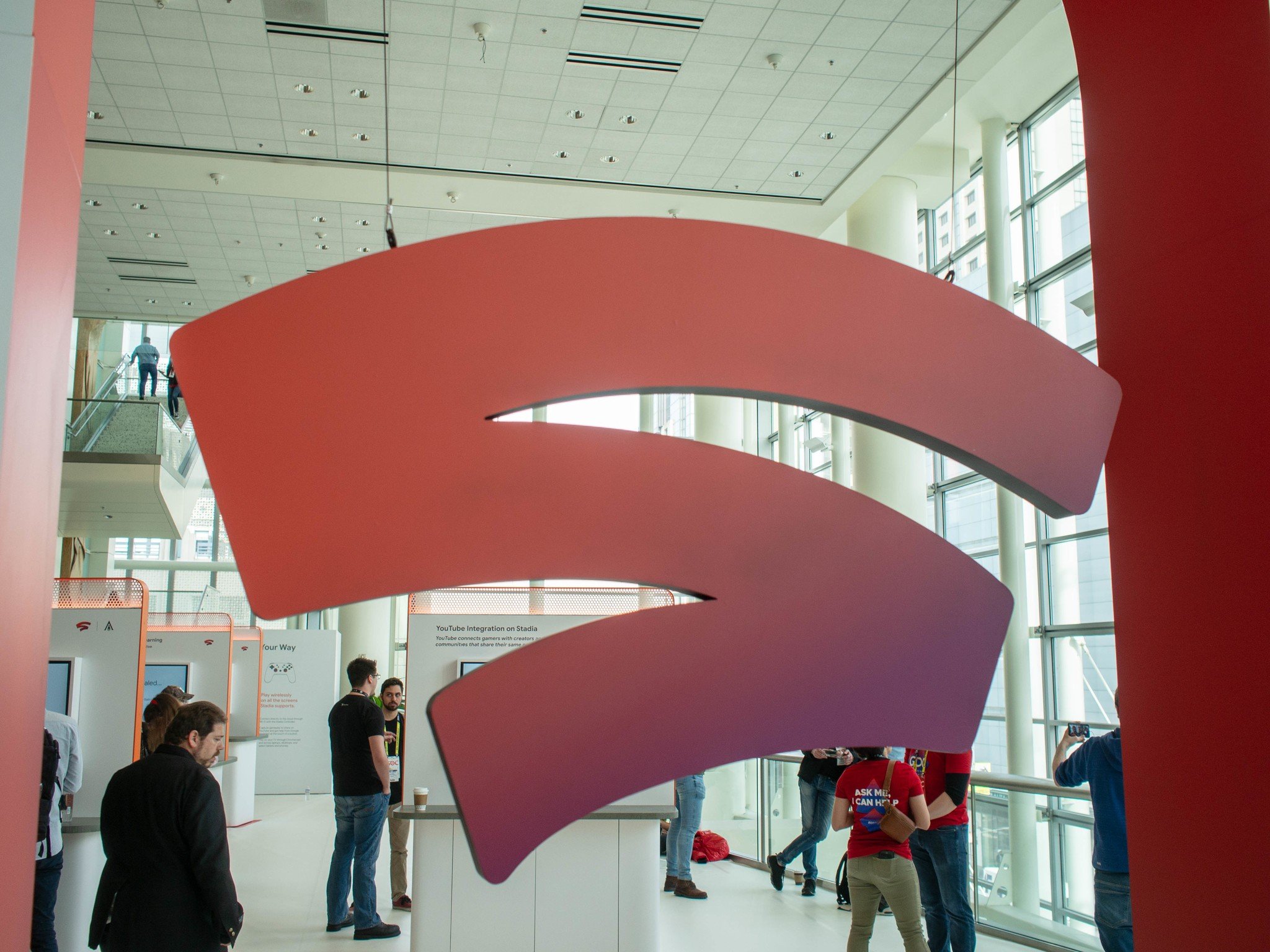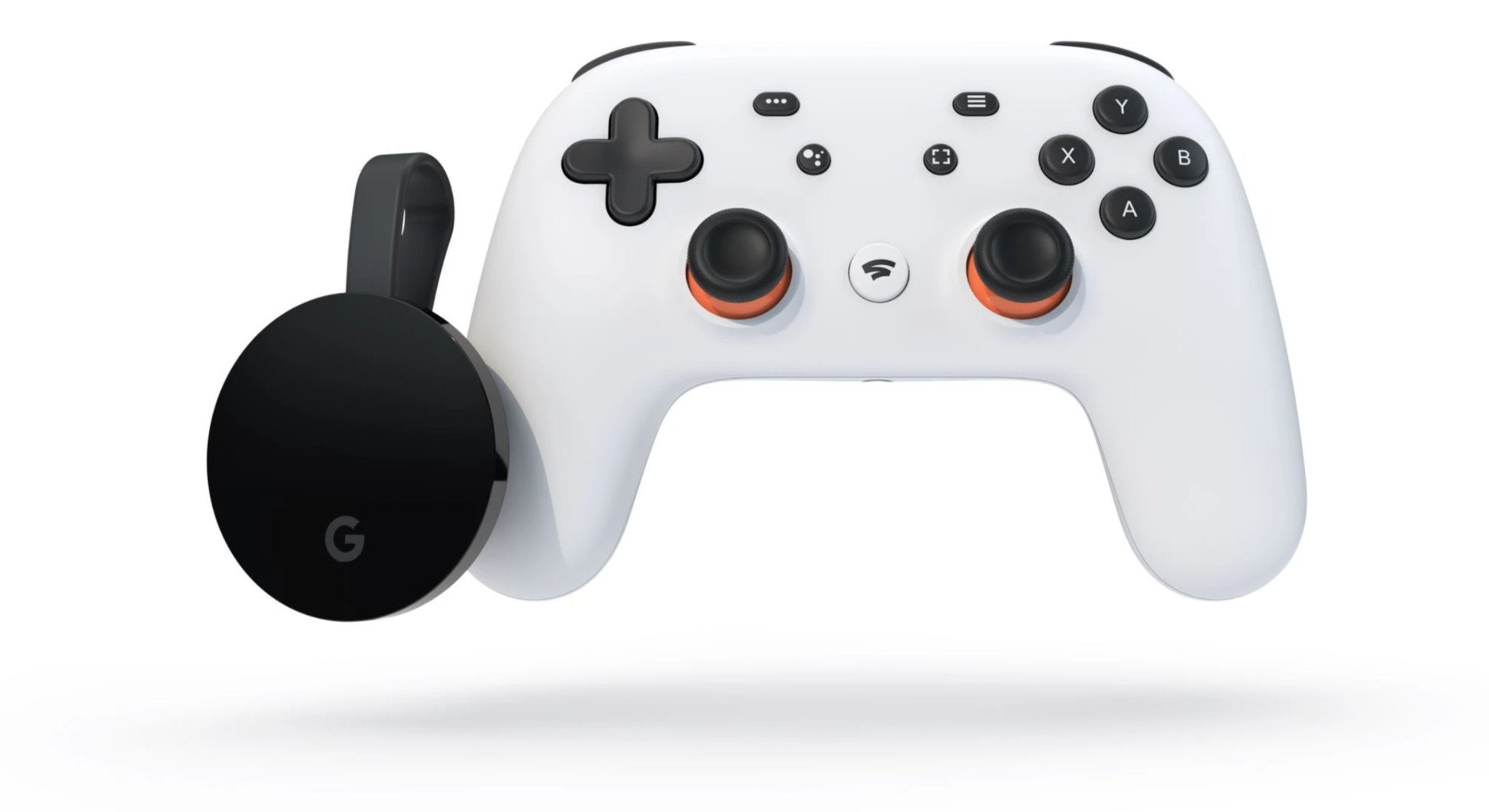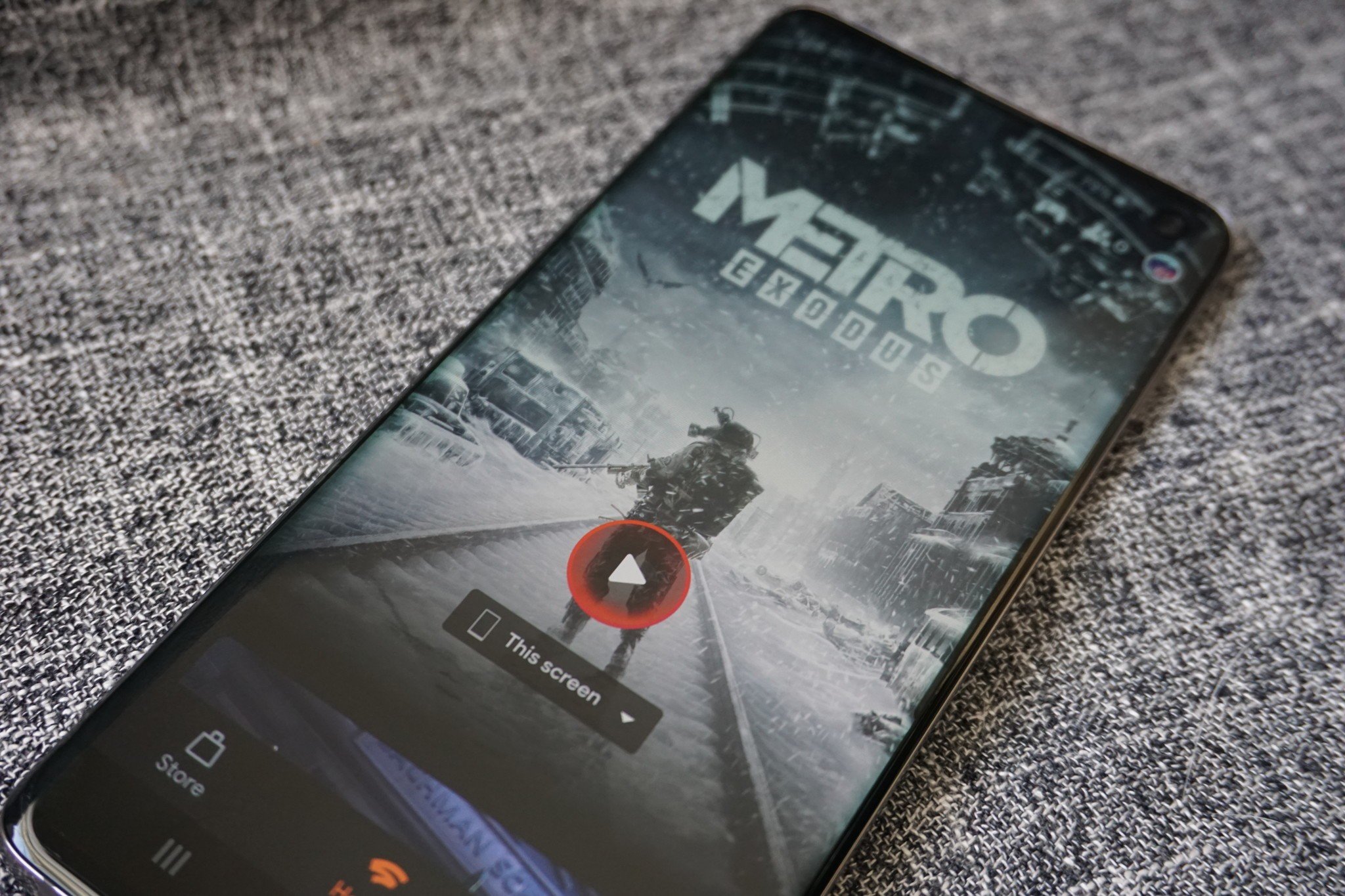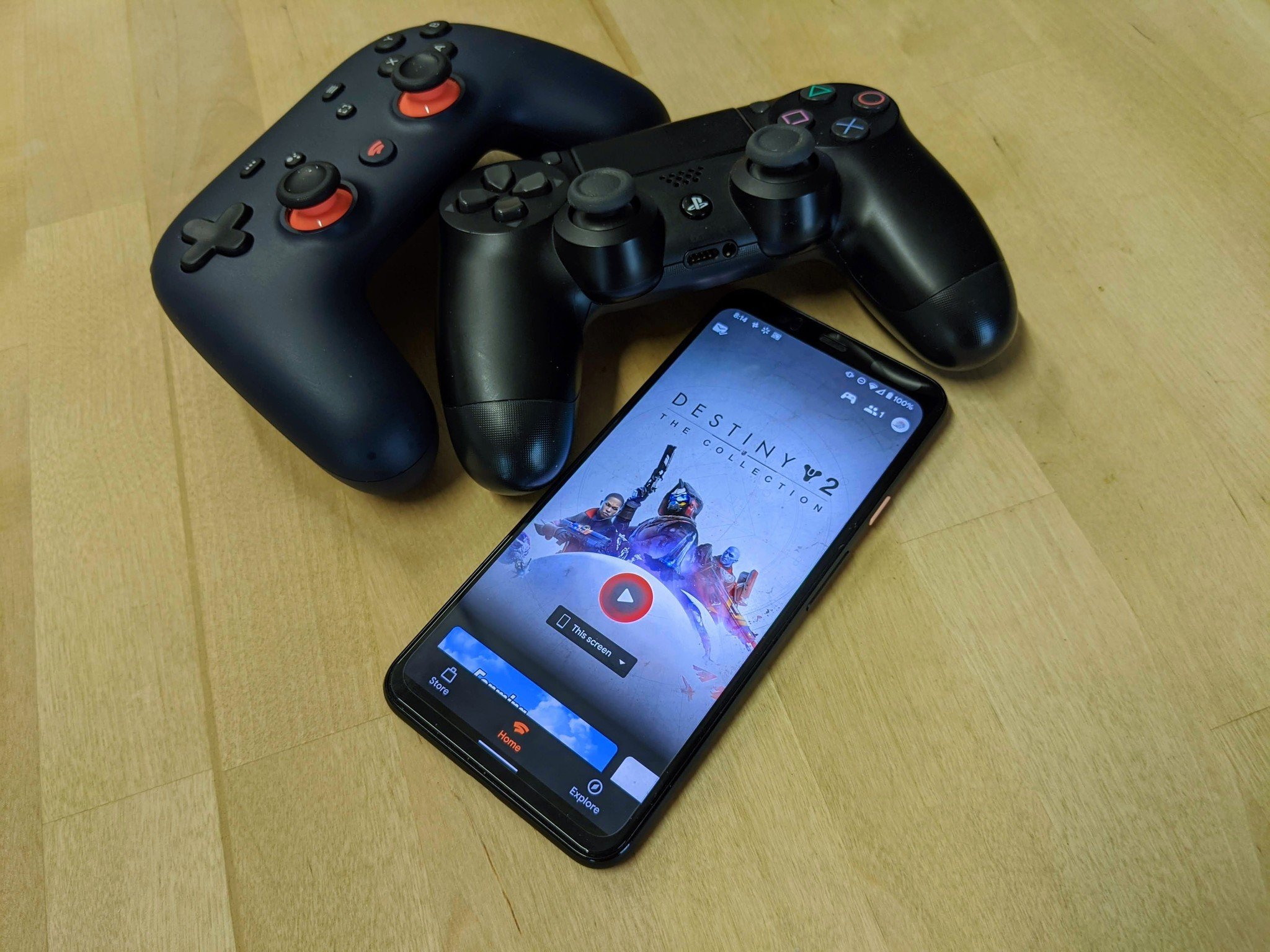Stadia desperately needs some TLC from Google, because it's being neglected right now.
As with any service like Google Stadia, it evolves over time. What it launched as may look nothing like what it becomes three months, six months, even a year after release. Because of this, we'll continually look at Stadia to see how far it's come — and how far it still needs to go to become a viable game streaming service for everyone.
To get it out of the way, in the three months since its launch in November 2019, not much has changed at all. Despite Google's insistence that the company is still working on features like Crowd Play and State Share, none of these features have been added yet. Stadia is still woefully under baked, and unfortunately more time in the oven hasn't helped yet.
What has changed since launch is that Stadia is now available on more platforms and has a few more games. But to act like these alone make Stadia a much better service now than in November would be a lie.
In our initial review, Russell Holly called Stadia "Embarrassingly incomplete, staggeringly good." This still rings true. Google hasn't quite unlocked its potential, which is a shame because what's there is actually a solid foundation.
Gaming anytime, anywhere
Google Stadia Premiere Edition
Bottom line: Three months after its release, Google Stadia is still an incomplete mess. It streams games well enough over a stable internet connection, but it needs to add a lot more value and get some of its long-promised features onto the service.
The Good
- Downloading the app and immediately streaming a game feels like magic
- Very little input lag or rubberbanding on a good network
- Now on more Android phones
The Bad
- Many promised features are non-existent
- Feels like it's in beta
- Games cost full price even for Stadia Pro members
- PC does not support wireless controllers
- Very small game library
- Stadia not playable on iOS yet
Note: I've been using Google Stadia with a Buddy Pass. I do not own a Stadia controller nor a Chromecast. I feel that this puts me in a position to review it more authentically, in a way. Many who use the service won't have purchased the Premiere Edition and will instead stream through their PC or mobile devices with whatever controllers they have on-hand. That's exactly the sort of crowd that Stadia was built for.
Stadia A live service that isn't evolving
People have been treating Stadia like it's a console, and frankly that's an unfair — and misleading — comparison. Stadia isn't a fixed piece of hardware. It's a living, breathing service that's completely digital. It's software. It should be held to the same standards as such. And when it comes to software, Stadia just doesn't cut it when Google isn't giving it the right support it needs to flourish.
People have been treating Stadia like it's a console, and frankly that's an unfair — and misleading — comparison.
Stadia isn't about what specs it has. It's about the services and features that it offers. It's about the games you can play on it. Like I mentioned before, many of those features are just non-existent right now. And its complete list of games is downright pitiful. Yes, there are some amazing AAA titles like Metro Exodus, Assassin's Creed Odyssey, Red Dead Redemption 2, and Borderlands 3 to name a few, but the total number of titles amount to a few dozen.
Despite complaints and pleas for Google to at least act like it's putting any sort of effort into Stadia, people are met with hollow platitudes and vague promises of stuff "coming soon." There's very little transparency on Google's part, no matter how many AMAs a couple employees do on Reddit.
Stadia Play anywhere, anytime — sort of
When Stadia launched, it was only available for Chromecast, PC, and Pixel mobile devices. It has since expanded to other mobile devices like Samsung's flagship Galaxy S and Note series, along with a few ASUS and Razer phones. Though there is a Stadia app available for iPhone and iPad on iOS, you can't actually use it to play games. Effectively, it's useless for anything other than account management.
Stadia still has a long way to go before it lives up to its promise of gaming for everyone. Google promoted its ubiquitous nature hard, and sold the image of an entire world connected by gaming, where anyone, anywhere could instantly drop what they were doing and hop into a brand new game — no downloads required. That's so far from reality right now that it's laughable.
Stadia Not as smart as you'd expect
For some reason, the desktop version of Stadia on Chrome only supports the use of wired controllers — not even Stadia's own controller works wirelessly on desktop right now. When I went to use my Astro C40 TR, which I normally use on my PS4, I found that though it worked extremely well, Stadia did not register that it was a PS4 controller. As such, many of the button prompts were wrong. If the screen told me to press X, what it actually wanted me to do was press the square button, because that's where X would be on a Stadia and Xbox controller. If it told me to press A, I'd need to press X. There's no A button on PS4 controllers. You'd think Stadia would be able to recognize this, but wires must have gotten crossed somewhere along the line because it doesn't.
It's a little disconcerting that Google, of all companies, would allow oversights like this.
Stadia Streaming still feels like magic, sometimes
In my experience with Stadia on my own Version Fios gigabit internet, I didn't encounter too much input lag or rubberbanding and the like. For the most part, everything played smoothly, no matter what game I was playing. Metro Exodus looks exactly as it does on my Xbox One X, and I almost couldn't believe how quickly I could jump into a game without downloading anything. It truly does feel like magic.
Stadia still has a long way to go before it lives up to its promise of gaming for everyone.
When it comes to streaming resolution, I never had a problem no matter what resolution it streamed at, whether it be 1080p or 4K. I've never been one to care much for resolution as long as it looks good, and I probably couldn't tell you either way which resolution it was streaming at just from looking unless I went and checked. Take that for what you will. Stadia recently enabled 4K streaming resolution on desktop, quite literally as I was in the middle of writing this review, but I honestly didn't notice a huge difference.
I admittedly only played games available with Stadia Pro — which included Metro Exodus, Destiny 2, Gylt, and Grid, among others — because I see no point in wasting money on games that I either have already or would rather play on my Xbox One X or PS4 Pro instead. As amazing as it feels to instantly stream these games on my phone or desktop, I don't care enough to go out and get a Chromecast for my television when my consoles are already sitting right there.
The problems I encountered happened when I connected through any internet that wasn't my own. On my mother's 100Mbps Verizon Fios plan, Stadia was completely unplayable on both my laptop and Samsung Galaxy S10 — no matter if I was close to the router or in another room. And when I did get it working, the lag was horrendous. Mind you, I also did a few internet speed tests which told me I was achieving speeds more than capable of running Stadia smoothly, according to Google, but they were also pinging off of a server in Toronto — for reference, I live in Buffalo, New York, which is about 62 miles away from Toronto by plane — and this took about 41 milliseconds. This could have affected my streaming quality.
That same speed test at my apartment with gigabit internet hit 34 ping from that same Toronto server. Oddly, another speed test from another website gave me 15 ping at my apartment, and that was from off of a server in New Jersey.
It's important to remember that due to Stadia's inherent nature, my experience with streaming quality could be drastically different from yours. Heck, mine even varies day to day and depending on where I am.
Stadia Stacking up to the competition
Stadia's major competitors right now are GeForce Now and Project xCloud, the latter of which in still in its preview phase. When it comes to features, Stadia doesn't have much to differentiate itself because the features that Google promoted just aren't there. It's only exclusive, Gylt, isn't exactly a killer app.
And when it comes to general performance in terms of input lag and streaming quality, they're all about comparable with one another. A lot of Project xCloud games only stream at 30FPS as opposed to 60FPS with GeForce Now and Stadia, but it's all about consistency. All three services, for the most part, work as intended on good bandwidths.
Still, if they had to be ranked, GeForce Now tends to edge out Stadia when it comes to reliable performance. It doesn't help Stadia's case that GeForce Now also allows players to access certain games in their Uplay, Epic Games Store, and Steam libraries that they already own. And GeForce Now's paid tier is only $5/month compared to Stadia Pro's $10/month.
GeForce Now tends to edge out Stadia when it comes to reliable performance.
So in the three months since Stadia has released, GeForce Now has left beta and effectively became a better service right out of the gate. Google, on the other hand, appears to have been twiddling its thumbs because the only notable features to have been added to Stadia since launch have been: accessible achievement lists, Stream Connect, support for more Android devices, and 4K resolution on PC.
Let's just hope that developers don't keep pulling their games from GeForce Now, though Stadia doesn't seem to fair much better when Google reportedly doesn't offer enough money for studios to port their games. Faith in Stadia right now is minimal, to say the least.
Stadia Bottom line
Stadia is a husk of a service right now. The potential is incredible, and when it works, it works really well. But the reliability just isn't there. The features aren't there. Google needs to pick up the pace and start actually supporting Stadia instead of leaving it out to rot. This isn't how a platform release should be three months on, especially for a service like this that was advertised as a full launch.
I would not recommend you pay for a Stadia Pro membership, nor would I honestly recommend the free version, either. You gain nothing when you still have to pay full price for games either way. I would only tell people to get Stadia if it is their only option to play the games on its service, meaning they aren't able to get their hands on a PlayStation 4, Xbox One, or a good gaming PC.
WIP
Google Stadia Premiere Edition
Stadia still needs a lot of work before it's a viable service.
Three months after its release, Google Stadia is still an incomplete mess. It streams games well enough over a stable internet connection, but it needs to add a lot more value and get some of its long-promised features onto the service.









0 Response to "You Can See More: Google Stadia review, three months later: Nothing ventured, nothing changed"
Post a Comment